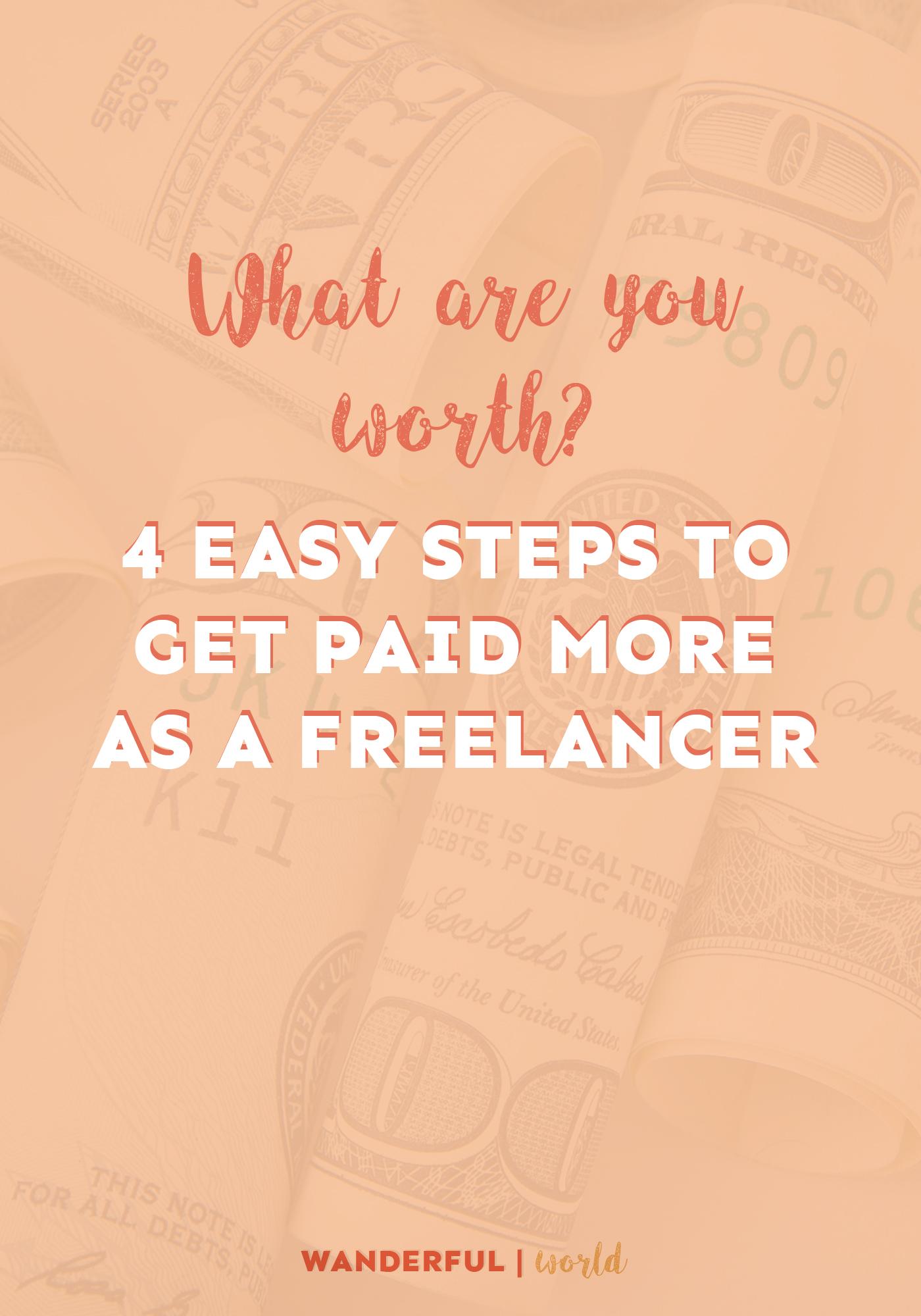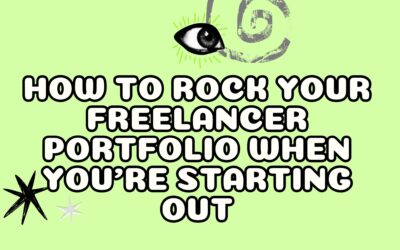If there’s a universal view about freelancers, it’s that they’re the starving artist type. The term feast and famine cycle crops up more often than we’d like, and we constantly have to remind people that no, we don’t crack open a bottle of whiskey at midday.
But this whole “freelancers are poor” thang is starting to get to me.
Why? Because I’m making more now as a freelancer than I did in my full-time job and more than I’d ever dream of making in an employed position before I was 30.
It’s a myth that freelancers have to scrabble together their pennies at the end of the month.
The people who believe this trite are those who have either a) tried going freelance themselves and had a pretty rough time of it, or b) have no idea what freelancing actually involves and how many opportunities there are out there for the self-employed.
Now, I know you’re probably just starting out on your freelancing journey (fantastic news! Welcome to the club!), so it’s unlikely you’ll be raking in the moolah on your private jet each month. But there’s no reason that you can’t be earning the same, if not (way, way) more than your full-time position in no time at all.
Break Free From the Starving Artist Mindset
The first thing you need to do is step away from the starving artist mindset.

You are a talented professional, not the epitome of a centuries-old stereotype.
As soon as you distance yourself from this mentality, the sooner you can start embracing the possibilities of freelancing (which can involve very lucrative rewards).
Think about it: if we tell ourselves something enough, we start to believe it, right? And the way we feel about ourselves is the subconscious message we give out to others.
If I constantly tell myself I’m a broke freelancer because that’s what freelancers do, I start to believe I’m not worth more than minimum wage. I’m supposed to be poor, right? Because that’s just what freelancers do.
Now, imagine I’m talking to a client who has asked me for my rates. If I’m constantly thinking about meeting my rent or that I don’t deserve more than a very low fee (because, you got it, I’m a broke freelancer), I’m going to give off this vibe to the client.
They’re either a) going to accept the inevitably low offer I give them, or b) question whether I really know what I’m talking about.
Let’s flip this thing around.
If I constantly tell myself I’m a talented professional with important skills to offer clients, this will start manifesting in my communications with prospects and in my day-to-day life.
When speaking to the same client, I’ll come across as more confident in my abilities, which in turn will make them more perceptible to my higher offers (because I know how much my skills are worth).
Now, I’ll be the first to admit that getting paid more as a freelancer can be a scary prospect for a number of reasons:
- What if my offer isn’t accepted?
- What if the client laughs at my high prices?
- What if I can’t deliver the standard of work this high price promises?
- Any money is better than no money, right?
The list goes on.
And sure, you’re more than welcome to stick to the rates you’ve started out with (I’m not going to hark on about the state of the industry, because I think we’re all capable of figuring out how much we need to earn to live), but if you want to increase your overall wage, this means:
- Increased stress levels as you try and pile on more work
- Needing to work faster with quicker turnarounds, which can lead to burnout
- Taking on more clients, which means more emails and admin
This is the trap a lot of new freelancers get stuck in. They’re amazed that someone is paying them for their work, so they cruise along on neutral for years. Basically, they don’t raise their prices.
And this is fine if you’re okay still earning the same when you’re 40 as you were when you were 25. But if you want to increase your business and boost your income?
You gotta be raising those prices!

How to Get Paid More as a Freelancer
1. Target Higher Paying Niches
When I first started freelancing, I dived headfirst into the travel niche because it was what I knew best. I’d been a travel blogger for a while, I’d won a couple of awards, and I was starting to grow a name for myself in the industry.
I soon started landing clients and, like most newbies, I was amazed that people were actually paying me to write about the places I’d been. Seriously, it was a dream come true.
But after about six months or so, I started to notice something. I’d been trying with all my might to raise my prices, but those I pushed an increase with just sacked me off for someone else.
Why? Because there were plenty of people out there willing to write about their travels for next to nothing.
Let’s face it, travel writing is an enviable career, and the world and his wife wanted to be able to pull that one out at parties: “Oh yeah, I just write about all these amazing places I’ve been for a living.”
I started taking on more and more work, but the more I took on the more disenchanted I became with the industry as a whole.
So I switched things up.
As well as a background in travel, I’d also worked in marketing and digital media for almost five years. These weren’t skills that everyone had (you know, like the skill of hopping on a plane and exploring farflung beaches).
These were skills that businesses were willing to pay more for because, a) less people were willing to give away their knowledgeable for pennies, and b) there were generally less people who knew the ins and outs of social media, PPC, and everything in between.
While I loved writing about travel, it was getting dull churning out similar articles time and time again, so writing about marketing was a welcome relief.
How can you find higher paying niches?
- Look for areas where specific knowledge is required. Niches like health, finance, and insurance are just a few examples of areas where it helps if freelancers have specific knowledge.
- Look for money-minded industries. Travel is notorious as “dream” – basically, the idea of money isn’t well-placed in it. Whereas an industry like online marketing, where money plays a crucial part, is more likely to value paying its freelancers well.
This post from Jorden at Writing Revolt goes into an awesome amount of detail about how you can pick a profitable writing niche.
2. Review Every 3 Months (or Whenever Feels Right)
It’s so easy to get comfortable when you’ve found a steady collection of clients. I’ve been totally guilty of this in the past. Now, I make an effort to check in with my rates at least every three months. I ask myself:
- Am I happy earning what I’m earning?
- Has my work improved over the past three months?
- Have I picked up new skills?
- Do I have a better portfolio now than then?
If I feel like I have more to bring to the table now than three months ago (which, nine times outta ten I do, because we’re constantly learning as freelancers), I push for a rate change.
Now, this might not be a blanket rate change across all my clients. It might just be the lower-paying end of the spectrum, or the clients I’ve been working with the longest.
If I can see that my work has helped them improve their business and they’ve been praising all my submissions, I’ll send them a short email like:
Hey XXX
I hope you’re good!
I’m really enjoying working with you and seeing the progress of [SAID COMPANY] with the help of my writing. This is a courtesy email to let you know my prices will be going up to [PRICE CHANGE] as of the [DATE ONE MONTH FROM NOW]. Until then, the invoices will be the same.
I’m looking forward to continuing working with you.
Let me know if you have any questions.
As you can see, it’s firm, to the point, and I reiterate how my work is helping their business.
Even with that in mind, though, you might well be met with some resistance. In that case you need to be prepared to lose the lower paying clients who don’t value your work (their loss!).
While this is going on, I’ll be bringing on newer clients at my higher rate, so for every lower-paying client that doesn’t want to take the price jump, I’ll have another client lined up to take over the space.

3. Re-Focus Your Marketing Efforts
As freelancers, we constantly need to be marketing our services. Who knows when a client might drop off the radar or we find ourselves short at the end of the month?
We want to be getting our name out there so that we can start luring clients into us instead of the other way round. This clears space for other ventures.
So, if you want to get paid more, start analysing which marketing methods are working best for you.
I use a marketing technique I like to call the “One Thing a Day Way”, where I focus on one marketing method each day. For example, I might reach out to clients on Twitter on a Monday, write a guest post on a Tuesday, connect with business owners on LinkedIn on Wednesday, and so on.
This gives my strategy consistency and helps me evaluate what’s working and what’s not (A.K.A. the most important thing when it comes to marketing).
So many freelancers hit social media straight away and spend hours tweeting and following with no real results. They do this because every marketing article on the planet tells them this is what they should be doing.
But instead we need to focus on what works for us and our individual businesses. Knowing where to market yourself depends on:
- Your niche (where are clients in your niche most likely to hang out?)
- Your online presence (where do you have the most clout?)
Finding methods that work for you doesn’t happen overnight. For example, it took me a while to realise that Facebook groups are awesome, and I only started interacting in them a couple of months ago.
4. Focus on Value
Finally, the number one thing you need to remember if you want to get paid more as a freelancer is to think about your work in terms of value rather than quantity completed.
When you can evaluate what the client is going to get out of your work, you start to realise how much it’s really worth to them in the great scheme of things.
Look at it this way:
A client gets in touch with me because they want a sales page writing for their new course. Here are two ways I could consider quoting them:
- I charge them $150 because I predict I’ll write about 500 words and I charge $0.30 per word.
- I charge them $750-$1,000 because if they sell one course at $997, they’ll have instantly made back the money and then some.
You see how I’m focusing more on the value of the page – A.K.A. how much it’s going to make the client, rather than the out-put of work I have to do.
Getting paid more as a freelancer is something we all strive for, but it really doesn’t have to be that difficult.
In fact, since I’ve dropped the broke freelancer mindset and started applying the above techniques to my business, I’ve seen a huge jump in the calibre of clients I’m taking on and the pay range in which I’m charging them.
Your turn!
Do you want to raise your prices? What is holding you back? Share your concerns in the comments below!






This is a really great post. I’m not in the freelance world but this is something I struggle with trying to monetize. You want to get work but don’t want to sell yourself short either. Thanks for the tips!
Thanks, Alissia! Hope it was useful for you!
Fantastic post, Lizzie! The feast-or-famine cycle is exhausted — I lived it for almost a decade, oi. I wish I had this advice back then and I hope it helps a lot of other freelancers 🙂
Thanks, Victoria! The feast-or-famine cycle is very real for most freelancers – hopefully this post will help people move away from that!
Fantastic! Love this. Charging based on value & not time investment is such a critical pricing scheme for freelancers. I’ve been in the freelance world for a while now, but I’m finally starting to charge what I’m worth, and it feels great. I just turned down a gig because their maximum affordable rate was about half my minimum acceptable rate. But that’s okay because I’ve got 3 other potential clients in the sales pipeline who *will* pay me what I’m worth. In other words: Never. Stop. Marketing.
Thanks, Mike! I think it’s so important that we price based on value rather than time. Isn’t it the best feeling when you *know* what you’re worth and can start turning down jobs that aren’t a good fit?!
Love these tips! Another thing that usually helps is to develop the habit of investing some hours a week purely to business development, be it upgrading the branding, improving your systems or even just thinking of new ways to make your business grow
So true, Luis! I always try and do one thing each day that helps move my business forward, or research and brainstorm my next steps.